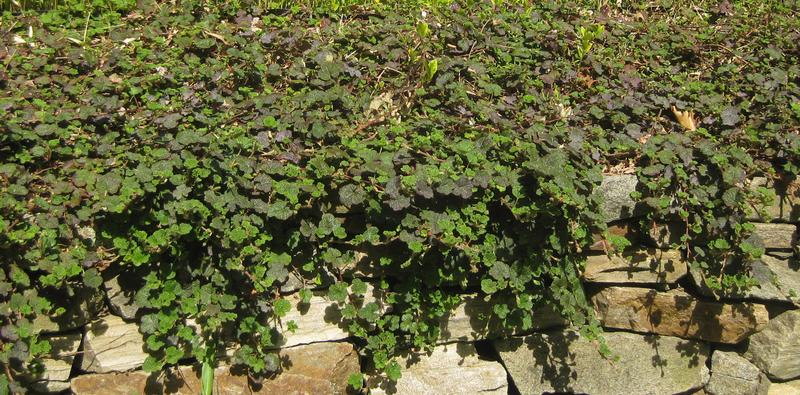Ruderal Rhexia, Rhynchospora, & Rubus
This week has been an inventory extravaganza, with new items going onto our availability left, right, and center. Amongst the slew of new and returning plants are some lesser known and even lesser utilized species that deserve their chance in the spotlight. While we frantically attempt to broaden our materials list before the busy fall season hits, let us implore you to dive deeper into some plants that demand your attention. These plants are chosen specifically for their ability to thrive in a variety of site conditions, including recently disturbed areas, and represent textures and colors that are unmatched in the landscape.
As with anything in the botanical world, there’s a term for hearty plants that can thrive in primordial landscapes: ruderal, derived from the Latin root, rudera or ruderalis, meaning “rubble”. We want to introduce you to three selections specified for landscape areas of concern, specifically those requiring soil stabilization and pioneering by tough, gritty plants.
First up, Rhexia virginica.
Rhexia virginica – Virginia meadow beauty
If this interesting native has never crossed your path, prepare to be charmed. Rhexia virginica is a native perennial that enjoys wet, low-lying areas and meadows, great for naturalized plantings with consistently moist soil. Interestingly, Rhexia virginica is capable of colonizing recently disturbed areas prone to recurrent burning, and due to its love of boggy, sandy soils and pine woods, make it basically the perfect perennial for the Pine Barrens. It’s wildly capable of success in other unexpected places, however, including roadside swales craving color. And color they shall have! The four-petalled flowers that range from baby pink, to flamingo pink, to hot pink, act as a backdrop to the electric yellow anthers that seduce passing bees into rubbing their hairy little bodies all over the flower interiors. Bumblebees and species of solitary bees are required for the release of pollen from the anthers, a process referred to as “buzz pollination”. The buzzing, which must occur at a specific frequency, vibrates the anther, which then releases inconspicuous pollen from a microscopic terminal pore, creating a low, cacophonic hum in a patch of Rhexia virginica. The pink-and-yellow flowers and scarlet red, pitcher-shaped seed capsules adorn foliage and stems that are just as ornamental as the former two characteristics. Throughout the growing season, tones of reds, oranges, and yellows can commonly be found melding with the natural medium green of the foliage. Our collection of Virginia meadow beauty here at the nursery looks like a literal rainbow with the shades of pink, red, orange, gold, chartreuse, and emerald.
Rhynchospora colorata – narrowleaf whitetop sedge
It’s a flower! It’s a grass! It’s a... sedge? If you’re ready to confuse and confound garden onlookers with a highly versatile native evergreen, Rhynchospora colorata is your partner in crime. Delicate, windmill-like inflorescences that bloom from May to September resemble a perennial oddity, even enticing pollinators like solitary bees to forge for nectar. However, this interesting selection is actually a member of the sedge group, and its noticeable edges along the margins of the blades as well as the long, spidery tips of the inflorescences possess these familial characteristics that help to identify it as such. You won’t need much help identifying this plant in the wild once you’ve seen it, though – its appearance and clumping habit that spreads outwards in a rapid-fire fashion, makes it a unique force in the landscape, and it is visually distinguished from nearly every other notable sedge due to its shooting-star-shaped blooms. Known commonly as narrowleaf whitetop sedge and starrush whitetop for its... well, narrow blades and white, star-shaped tops, Rhynchospora colorata is a facultative wetland species that can handle periods of submersion in waterlogged soils and also does well in poorly drained, heavy soils such as clay.
Rubus rolfei – creeping raspberry
What’s midsummer without a proper berry harvest? Sure, black chokeberries (Aronia melanocarpa), invasive but delicious wineberries, and elderberries (Sambucus canadensis) are coming into season right now – but there’s nothing quite like plucking jewel-toned fruits from an obscure and infrequently used groundcover. A plant with as many landscape abilities as it has names, Rubus rolfei, often referred to in the trade as Rubus calycinoides, Rubus pentalobus, and Rubus hayata-koidzumii, is a procumbent evergreen shrub that enjoys creeping about and creates a dense patchwork of thick, ruffled foliage on long, spreading branches that scramble over poor soils, rock walls, slopes, and areas prone to erosion. In early to midsummer, small white flowers appear, somewhat concealed by, but nearly iridescent against, the deep green foliage. Brightly colored aggregate fruits ranging from orange, to salmon, to red in hue, act as edible gemstones and mimic the autumnal colors of the foliage, giving functionality and multi-seasonal interest to difficult areas that often experience fluctuations in moisture.
Virginia Meadow Beauty (Rhexia virginica) (illinoiswildflowers.info)
Rhexia virginica Meadow Beauty | Prairie Moon Nursery
Rubus calycinoides (Creeping Raspberry) (gardenia.net)
Rubus rolfei | Landscape Plants | Oregon State University
Rhynchospora Colorata | Whitetop Sedge | South Carolina Native Plant Society (scnps.org)
Rhynchospora colorata (starrush whitetop) | Izel Native Plants (izelplants.com)
NParks | Rhynchospora colorata

Rubus rolfei (syn. calycinoides)

